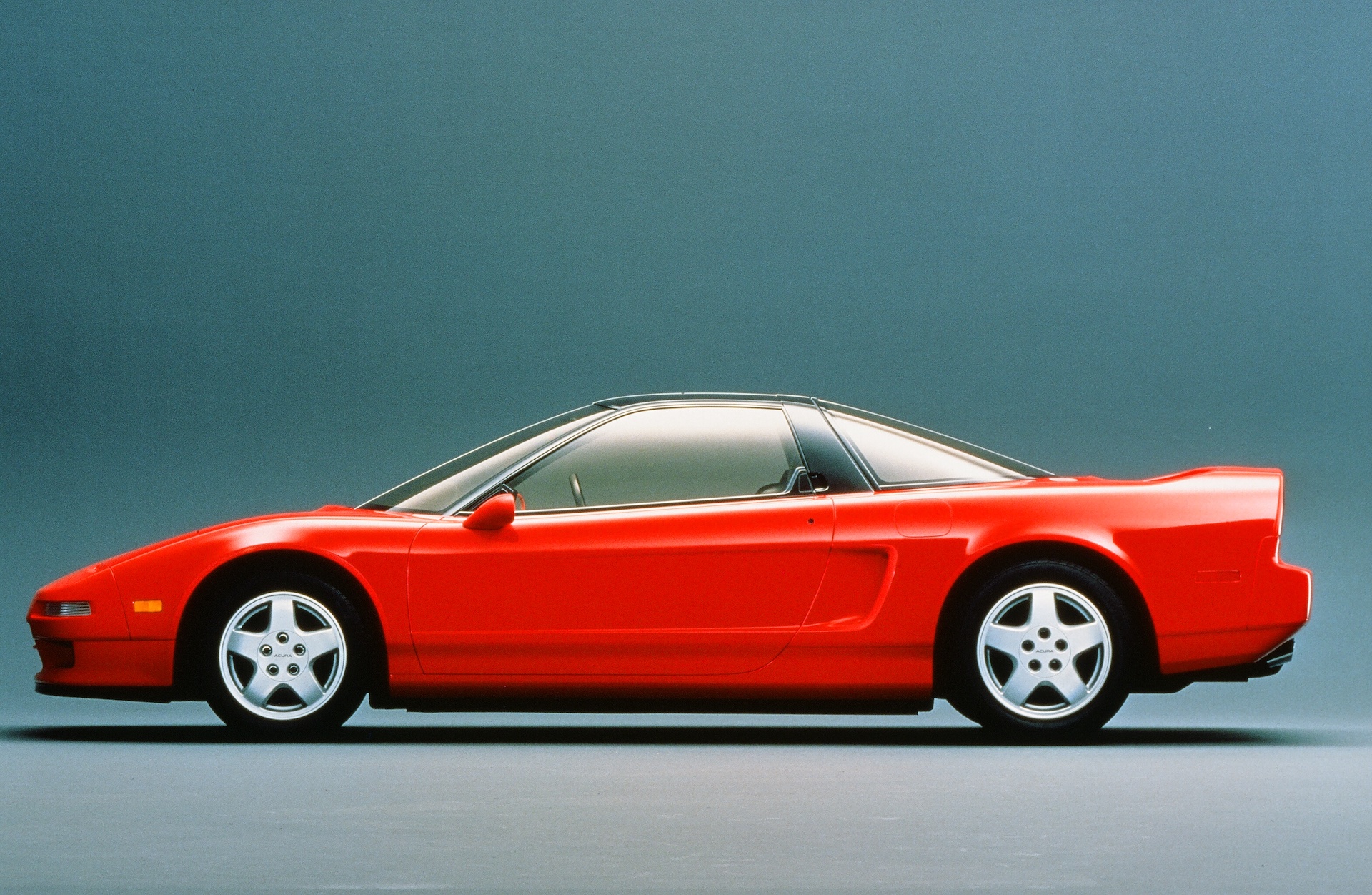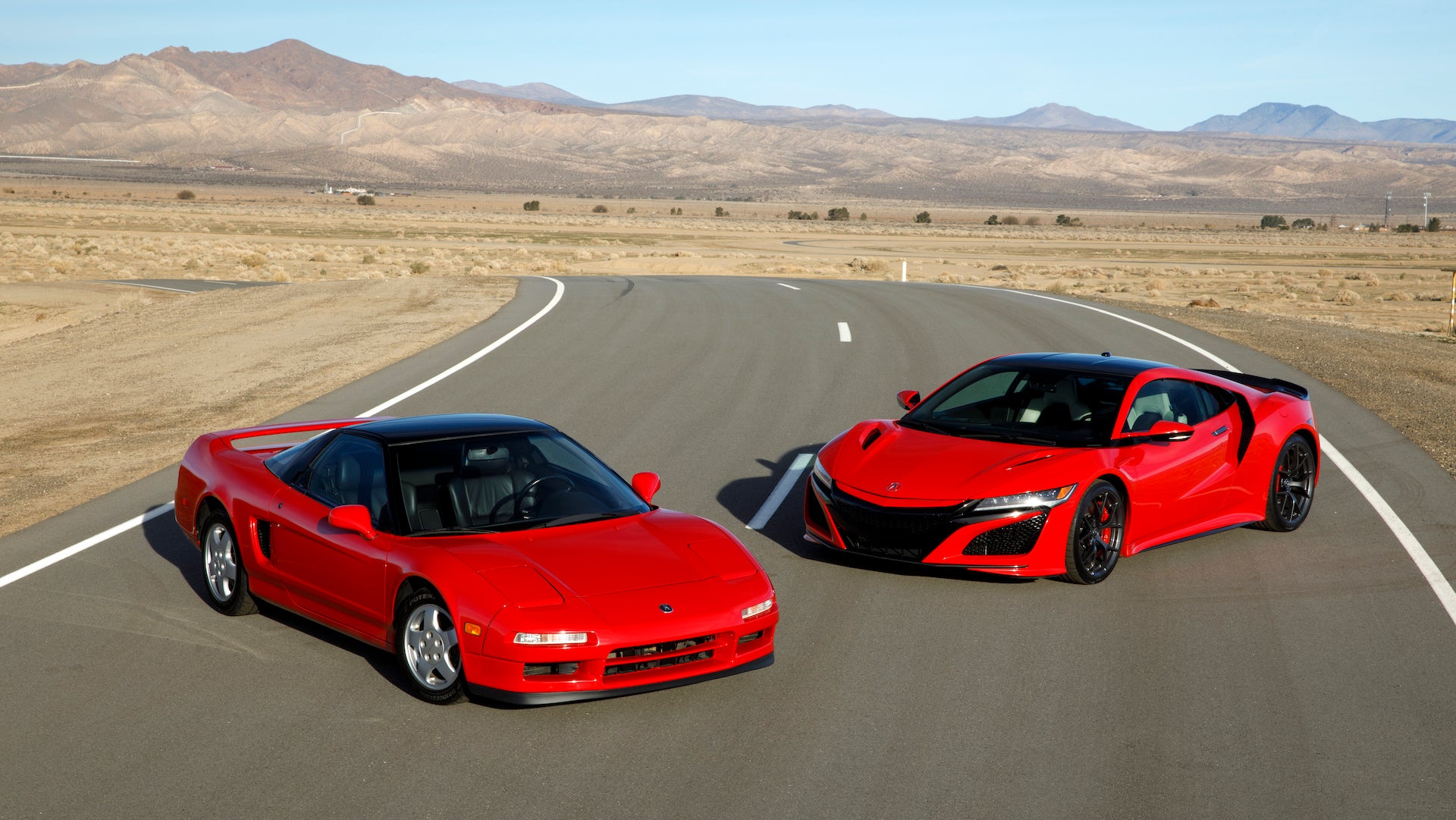Want to feel old? The Acura NSX, one of the most popular supercars of the 1990s, celebrated the 30th anniversary of its unveiling at the Chicago Auto Show last week. As a result, a plethora of little-known facts ranging from "whoa!" to "what?" have been released by Honda historians.
Whether you remember the old-school supercar for its sleek profile, reliability, or stick-it-to-the-Europeans attitude, the fire of that old NSX still burns hot. The new 2019 Acura NSX, with its generous dimensions and hybrid V6, is a far cry from the original. It's taken its lumps in the press and basically no one is buying it, but we actually like this modern, American-built supercar: it's visceral, fast as hell, and runs ably with the big dogs. It just doesn't have that whoa that made the original so special.
What Does NSX Even Mean?

According to Acura, term NSX was first NS-X. In fact, neither NS-X nor NSX were originally meant to be the car's official name. But it stuck after Honda was taken aback by the buzz that gathered as the prototype was sighted around the world.
The prototype's original development team considered NS-X to stand for "New," "Sportscar" and "unknown world," with "X" being the mathematical symbol for a variable or an unknown value. But after a funky twist of events, the team at American Honda chose to run with the definition of "New Sports eXperimental."
Speaking of the Americans, the fact that the NSX was given an Acura badge rather than Honda came down to a factor as mundane as timing, since the then-new Japanese-American brand was scouting for a halo sports car to represent its all-new lineup of vehicles.
F1 Legend Ayrton Senna Didn't Care For It

In February 1989, Honda met up with three-time Formula 1 champion and racing legend Ayrton Senna—a Honda factory driver at the time—in Japan. This was right around the time the public-facing NSX prototype was being shown in Chicago. Honda asked Senna if he could test the NSX between F1 testing sessions at Honda's Suzuka Circuit. Senna agreed. Never bashful, Senna was loudly unimpressed with his first go.
Honda claims that even though the Japanese automaker had aimed to deliver Ferrari and Porsche levels of rigidity, Senna gave it a meh and said it could be better.
"I'm not sure I can really give you appropriate advice on a mass-production car," Senna told the team. "But I feel it's a little fragile."
Thanks to Senna's input, the development team raised its targets for rigidity and eventually took the prototype to the Nurburgring, where after eight grueling months of testing engineers were able to raise the NSX's rigidity by a staggering 50 percent. Good job, Ayrton.
VTEC Almost Didn't Kick In, Yo

Perhaps one of the most interesting facts about the NSX's provenance is that it wasn't supposed to feature Variable Valve Timing and Lift Electronic Control (VTEC). According to Acura, the NS-X prototype shown to the media at the Drake Hotel in Chicago in 1989 had a dual-overhead-cam V6 engine—no VTEC. In fact, VTEC applications for V6 engines didn't even exist at the time.
The story goes that when the prototype's engine was fired up and revved during the media introduction, Honda president Tadashi Kume took a listen and wondered why the NSX didn't feature VTEC, which was brand-spanking-new engine tech. The development team told Kume that VTEC had only been developed for the brand's four-cylinder engines, and therefore not available for the new V6 in the NSX. Kume wasn't pleased, so he pushed for VTEC V6 development and ultimately got his wish, but it came with a few consequences.
The new VTEC cylinder head was wider than the head on the prototype's single-overhead-cam (SOHC) engine, which meant that the original body design had to be altered to fit the redesigned block. The wider engine forced designers to come up with a slightly longer wheelbase with increased front and rear overhang for the production NSX. But in the end, it was one man's demand that ultimately delivered the NSX as we know it.









